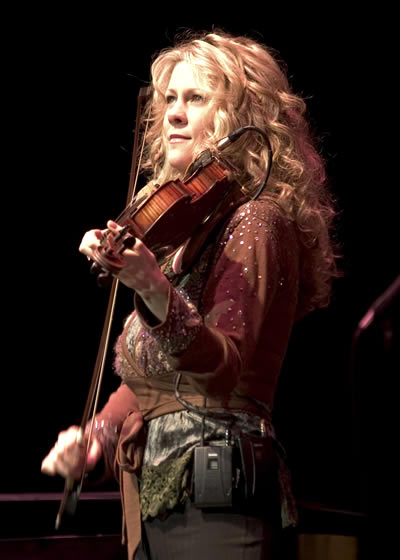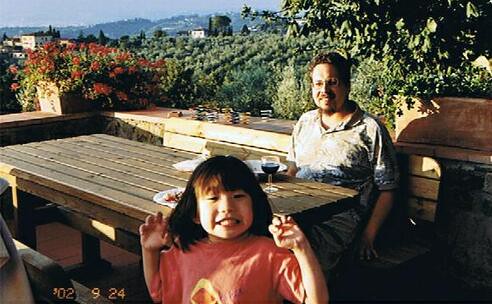|
|
Saturday, June 5th, 2010
| A mix with some of my favorite fiddle music, and a couple of my own performances... link and notes below the fold. |  |
↷read the rest...
posted evening of June 5th, 2010: 2 responses
➳ More posts about Fiddling
|  |
As Jack stood there the sounds began to separate in his mind; he felt that he could pick out and listen to each individual mote of sound -- the voices calling out a cadence, the whining violin, the creaking floorboards -- he was able to listen to each thing individually and it seemed to him that this was the second time he had heard such a thing, the first coming at the Dunkard Love Feast. Jack felt that what he was experiencing was somehow part of something hidden, the spare realm of musicians; is this what Bertha heard when she played her mandolin? Rather than a catalog of sounds it sounded to him like the very construction of music, a powerful and beautiful feeling, like manipulating the basic elements of the world.
(Chapter 20, at Little Bean Deshazo's wake)
It is becoming clear in the second half of The Wettest County in the World, that the music in the story is not just there for mood and setting; that it influences the course of events and Jack's perception of the events in some mystical, hard-to-understand way. I wonder if this is going to be clarified at all -- especially Jack's auditory hallucinations at the Dunkard Love Feast seem too important and too specific to go unexplained.
posted afternoon of June 5th, 2010: 1 response
➳ More posts about The Wettest County in the World
|  |
Thursday, June third, 2010
This picture (via The Wooster Collective) of a wheatpasted painting by Yz in Paris, is about the most soothing, beautiful image I can imagine right now: You can follow Yz's progress at her Facebook page, Vous Êtes Ici.
posted evening of June third, 2010: Respond
➳ More posts about Pretty Pictures
|  |
|

In the spring Jack Bondurant saw Bertha Minnix playing the mandolin for the first time at a corn shucking at the Mitchell place in Snow Creek. She held her head cocked low, eyes concentrating on the frets of her mandolin, made in the old teardrop style, the rounded bell of the instrument like a wooden scoop nestled against her narrow waist, the tight lace Dunkard bonnet on her crown and the long black dress to the wrist and ankle.... Jack watched Bertha Minnix's fingers ply the strings, the fret hand moving in quick jumps, her plucking a blur of twitching knuckle strokes, working through "Billy in the New Ground" while people slapped their hands in time....Bertha Minnix set her mouth again, cradling the mandolin to her belly, picking out the chords for "Old Dan Tucker," and the younger men and women standing there swayed and sang along. Get out'a th' way for old Dan Tucker
He's too late t' get his supper
Supper is over an' breakfast fry'n
Old Dan Tucker stand'n there cry'n
Washed his face in the fry'n pan
Combed his head on a wagon wheel
An' died with a toothache in his heel
John loaned me Matt Bondurant's excellent novel about his ancestors in Virginia's Franklin County, The Wettest County in the World as Sherwood Anderson called it, and I'm drinking it in -- mixes very nice with the bottle of bourbon John gave me for my birthday. One thing that's really striking me is the quantity and variety of music in the story, and how strongly it affects my reading and the images of the story in my head. The musical styles represented -- old-time, gospel, popular music from the 30's -- are pretty firmly part of my personal soundtrack.Here are Clarke Buehling and the Skirtlifters performing "Old Dan Tucker" at the Beavers Bend Folk Festival last fall:
posted evening of June third, 2010: Respond
➳ More posts about Readings
|  |
Tuesday, June first, 2010
The ending of "Tlön, Uqbar, Orbis Tertius" finds Borges sitting in the hotel in Adrogué where his family spent their summers during his childhood, working on revisions to "an uncertain Quevedian translation... of Browne's Urn Burial."  (What is "Quevedian"? -- It must mean "in the manner of Quevedo" -- I have no idea what this would mean in this context...✱) (What is "Quevedian"? -- It must mean "in the manner of Quevedo" -- I have no idea what this would mean in this context...✱) Sir Thomas Browne's Urn Burial is a 17th-Century discourse on an archæological discovery, a Roman grave site in Norfolk. The text of Hydriotaphia is online at the University of Chicago's Sir Thomas Browne page, with this amusing note from the maintainer of the site: Hydriotaphia and the Garden of Cyrus were published together in 1658, on which edition this web edition is based. They form a work that is somewhat difficult but rewarding to read. The number of critics who have a rock-solid grasp of the entire work can be counted on the fingers of one foot, so there's an open field out there for those inclined towards such work. Most critics read Hydriotaphia and comment on it as though they had in fact finished both sides. Among those whose comments are more interesting are Carlyle, Lytton Strachey, and, somewhat surprisingly, Virginia Woolf. Among those whose work seems to be based on something else the stand-out is Gosse✽, whose commentary is so unrelated to the text putatively in front of him that it becomes a case-study in itself.
 William Hamilton's address "Sir Thomas Browne, Jorge Luis Borges y Yo" is reprinted in the Atlantic of June 2003. Borges refers to his translation of Browne's Urne Buriall in this interview. It seems like he did actually translate it or part of it in Quevedian Spanish, I am looking for more info about this. Christopher Johnson has an essay in Translation and Literature called "Intertextuality and Translation: Borges, Browne, and Quevedo".
✱Possibly "Quevedian" just means the language of the translation is archaic, 17th-Century Spanish. -- More info from John and Rick in comments. ✽And Gosse père wrote Omphalos, which prefigures Russell's idea that the world was created just minutes ago with people's memories created intact, which is referenced in a footnote to "Tlön, Uqbar, Orbis Tertius" -- bringing us full circle.
posted evening of June first, 2010: 5 responses
➳ More posts about Ficciones
|  |
Monday, May 31st, 2010
This weekend I finally got around to moving all of my music files over to the (no longer) new computer... It's nice having all my music, or much of it, all in one place and easy to access. I'm working on a mix tape of songs with nice fiddle parts... In the mean time, here are ten consecutive songs in the shuffle...
- "When You Awake" by Bob Dylan and The Band; and what's more the version from Before the Flood with its pretty fiddle part, which track is going right onto the mix tape!
- "Lime House Blues" by Roy Smeck. Off a lovely mix tape from Petquality, "Pet's Guitar Picks".
- "The Boys of Blue Hill" from one of my practice tapes. This was a surprise for me -- turns out since I'm storing my practice sessions under the "My Music" folder, Windows Media Player considers them part of its library. Cool!
- "Let the Mermaids Flirt With Me" by Mississippi John Hurt.
- "Lonesome Road Blues," by W. Lee O'Daniel and his Hillbilly Boys. The band name sort of says it all...
- "Egyptian Cream" by Robyn Hitchcock and the Egyptians. Song I know vaguely but not too well, by the Egyptians!
- "King Bolden's Song", by the Louis James String Band. More fodder for the fiddle mix tape...
- "The Tennessee Stud," Nitty Gritty Dirt Band.
- "Chinese Water Python," Robyn Hitchcock.
- "Simple Twist of Fate" by Jeff Tweedy.
I like this WMP shuffle function, it flatters my tastes in music... Links below the fold, as I find them...
 - Here is Django's performance of "Lime House Blues"
- the Tweedy performance of "Simple Twist" comes from Carnival Saloon's mix tape
- The Louis James String Band tune is on the record of the Mobile Strugglers and the Louis James String Band, which I recommend highly.
- "Let the Mermaids Flirt With Me" by Mississippi John Hurt. I don't think I have heard this song even once, which surprises me. It is a fun tune. An amazing number of amateur covers of this song can be found searching the web; some of them are very well done.
- "Lonesome Road Blues" is available on Volume IV of Western Swing Chronicles.
- "Egyptian Cream" is on Gotta Let This Hen Out; but the version I was listening to is from Give it to the Thoth Boys.
- "Tennessee Stud" is a Johnny Cash song; this version is from Will the Circle Be Unbroken, which should be in everybody's music collection. Some other nice versions (including Doc Watson's, who plays guitar in the Nitty Gritty Dirt Band version) are on YouTube.
- a decent cover of "Chinese Water Python."
↻...done
posted morning of May 31st, 2010: 2 responses
➳ More posts about random tunes
|  |
|
UNURTH has the latest work from Blu (thanks for the link, Todd!) -- it is a collaboration with São Paulo artists Os Gémeos, on Lisbon's Avenida Fontes Pereira de Melo:
posted morning of May 31st, 2010: Respond
➳ More posts about Graffiti
|  |
|
 Some of the nicest weather we've had all month, yesterday and today. John and I played music for a long time yesterday afternoon, sitting out in the sunny, mild backyard; then Andrea came over and we barbecued some chicken and hot dogs, and all in all it was just about the perfect spring/summer evening.
Some of the nicest weather we've had all month, yesterday and today. John and I played music for a long time yesterday afternoon, sitting out in the sunny, mild backyard; then Andrea came over and we barbecued some chicken and hot dogs, and all in all it was just about the perfect spring/summer evening.
And the weekend continues! Happy Memorial Day, everyone -- Bob and Janis are coming over to jam for a while this afternoon.
posted morning of May 31st, 2010: Respond
➳ More posts about the Family Album
|  |
Saturday, May 29th, 2010
I am not the first author of the story called "The Library of Babel"; those curious as to its history and prehistory may consult the appropriate page of Sur, No. 59, which records the heterogeneous names of Leucippus and Lasswitz, Lewis Carroll and Aristotle. No. 59, which records the heterogeneous names of Leucippus and Lasswitz, Lewis Carroll and Aristotle.—foreword to The Garden of Forking Paths
Victoria Ocampo (sister-in-law of Bioy Casares and an important figure in the Buenos Aires literary scene, and the dedicatee of the title story "The Garden of Forking Paths") published Sur from 1931 until 1992 -- regularly until 1966 and infrequently thereafter. What a wealth of literature must be in those volumes! I am not finding volume 59 online anywhere -- Abebooks has a couple of editions for sale; La Biblioteca Virtual Cervantes has digitized Volumes I - VI. Maybe the NYPL would have it in their collection... off to check in with a couple of librarian friends for advice.
 Update: Found it!
posted afternoon of May 29th, 2010: 2 responses
➳ More posts about Jorge Luis Borges
|  |
|
At UCLA in 2002, Saramago reads from some of his work: 
Thanks to education blog Teach Our Children for the link.
posted morning of May 29th, 2010: Respond
➳ More posts about The Gospel According to Jesus Christ
| Previous posts
Archives  | |
|
Drop me a line! or, sign my Guestbook.
•
Check out Ellen's writing at Patch.com.
| |

